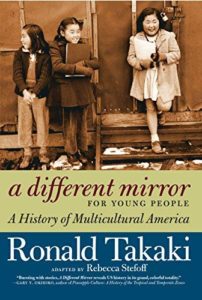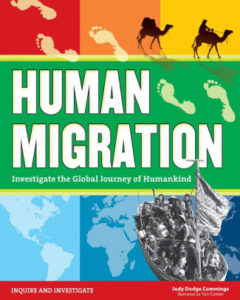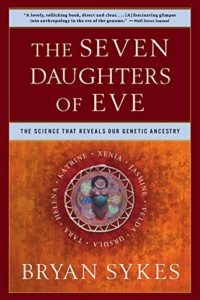Immigration these days is a timely and contentious topic – not only in the United States, but around the world. It’s also a theme that runs through history, from the early migrations of Stone Age humans out of Africa through the story of modern-day immigrants and refugees, driven by oppression, poverty, famine, and war.
When introducing kids to immigration, suggestions include discussing the many reasons why people emigrate; introducing kids to the stories of real immigrants, past and present; learning about immigration in the context of American history – we are, after all, a nation of immigrants; and emphasizing that not all immigrants – notably the millions of Africans forced into slavery – wanted to leave their homelands.
Table of Contents
Nonfiction
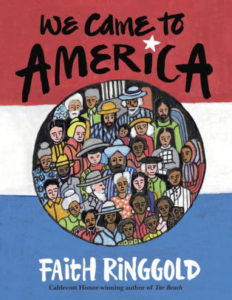 |
Faith Ringgold’s brightly illustrated We Came to America (Knopf, 2016) is a picture-book story of the diverse people that make up America. “Some of us were already here/before the others came. And some of us were brought in chains/losing our freedom and our names.” The conclusion: “We are all Americans. Just the same.” For ages 4-8. |
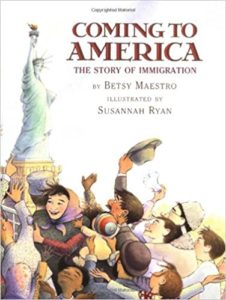 |
Betsy Maestro’s Coming to America (Scholastic, 1996) is an introductory history of immigration from the arrival of the first Stone Age peoples 20,000+ years ago through modern immigration laws. For ages 5-9.
|
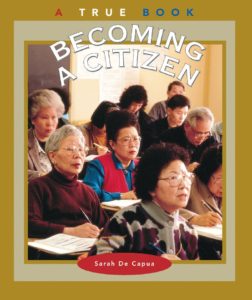 |
In the True Books series, Sarah De Capua’s Becoming a Citizen (Childrens Press, 2002) is a simple explanation of how the process works for ages 6-9.
Could you become a citizen? Take the Civics Practice Test. |
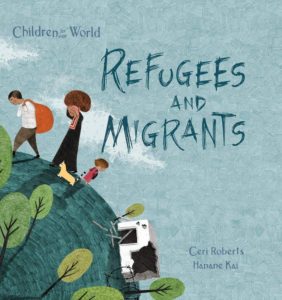 |
By Ceri Roberts, Refugees and Migrants (Barron’s, 2017) is one of the “Children in Our World” series, picture books aimed at introducing children to some of today’s current global issues. This book covers, for example, where refugees and migrants come from, why they leave home, how they travel, life in refugee camps, and what it means to seek asylum. Other titles in the series include Racism and Intolerance, Poverty and Hunger, and Global Conflict. For ages 6-10. |
 |
In the History of US series by Joy Hakim (Oxford University Press, 1999), Reconstructing America (Volume 7), which covers the period 1865-1890, includes an excellent section on 19th-century immigration. For ages 9 and up.
|
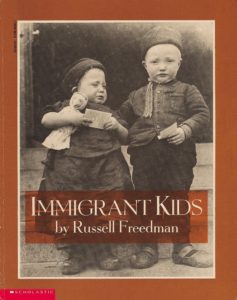 |
Russell Freedman’s Immigrant Kids (Scott Foresman, 1999), illustrated with impressive period photos, covers the journey to America and the experiences of immigrant kids at home, at school, at work, and at play. For ages 8-12.
|
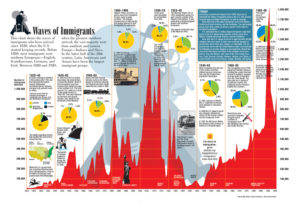 |
From Kids Discover, the Immigration issue, illustrated with photos, prints, and creative graphics, covers immigration worldwide and in the United States. Topics covered include “Ancient and Modern Migrations,” “A Nation of Immigrants,” “U.S. Immigration Since 1820,” and “How to Become a U.S. Citizen.” Available in print or digitally; there’s also an accompanying downloadable teacher’s guide and vocabulary sheet. For elementary- and middle-school-level kids. |
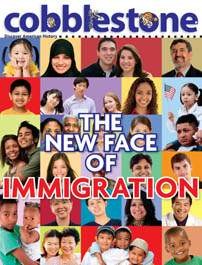 |
Cricket Media’s Cobblestone, an American history magazine for ages 9-14, is available by annual subscription or can be purchased as single issues. There are several issues devoted to immigration topics, including The New Face of Immigration, Angel Island, and Coming to America: Immigrant Stories. Each 52-page issue includes illustrated informational articles, maps and timelines, Fast Facts, cartoons, capsule biographies, quizzes and puzzles, and more. |
|
|
By Ronald Takaki, professor of ethnic studies at UC Berkeley, A Different Mirror for Young People (Triangle Square, 2012) is an adaptation of his classic adult history of multicultural America. Chapters include “The Hidden Origins of Slavery,” “The Flight from Ireland,” “The War Against Mexico,” “From China to Gold Mountain,” and “Jews Are Pushed from Russia.” The book cites many primary sources, including diaries, letters, and poems, many by teens. Highly recommended for ages 12 and up. |
|
|
By Judy Dodge Cummings, Human Migration: Investigate the Global Journey of Humankind (Nomad, 2016) in the “Inquire and Investigate” series covers the movements of people around the world from the Stone Age to the present day, with a reader-friendly text, fact boxes, lists of key questions, activities, and links to primary sources. For ages 11-15.
|
|
|
Bryan Sykes’s best-selling The Seven Daughters of Eve (W.W. Norton, 2002) begins with Otzi, the Ice Man, a 5000-year old traveler found in the Italian Alps in 1991 – and goes on to trace the lineages of all humans to just seven prehistoric women. A scientific explanation of where we all came from, based on mitochondrial DNA. Includes a helpful map. For teen and adults. |
Ellis Island
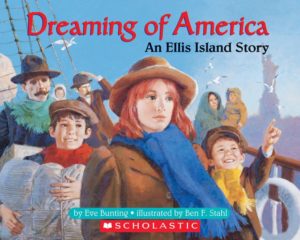 |
Eve Bunting’s Dreaming of America (Troll Communications, 2000) is the story of Irish Annie Moore, who became the first immigrant processed through Ellis Island – on January 1, 1892, her fifteenth birthday. For ages 5-8. |
 |
In the True Books series, Elaine Landau’s Ellis Island (Scholastic, 2008) is a simple photo-illustrated overview of the Ellis Island Immigration Station and how it functioned for ages 6-9.
|
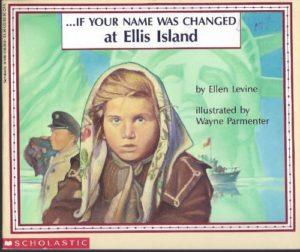 |
Ellen Levine’s If Your Name Was Changed at Ellis Island (Scholastic, 1994) is one of a popular history series, written in an interactive question-and-answer format. “What did people bring with them?” “Would everyone in your family travel together?” “What happened if you were detained?” “How would you learn English?” For ages 6-10. Want to know where your name came from? See Behind the Name: The Etymology and History of First Names. And find out all about your last name here. |
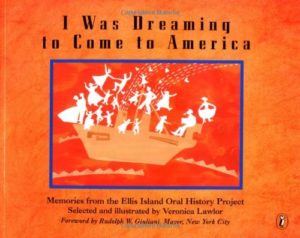 |
By Veronica Lawlor, I Was Dreaming to Come to America (Puffin, 2000) is a collection of memories of immigrants from the Ellis Island Oral History Project. Stories in their own words are paired with collage illustration. For ages 7-11.
Did your ancestors pass through Ellis Island? At the Ellis Island Foundation, enter a name and search this database of 65 million passenger records. |
 |
From Kids Discover, Ellis Island, illustrated with great period photos, prints, and graphics, includes general information about America’s immigrants and a history of Ellis Island and what happened there. Available either digitally or in print. For elementary- and middle-school-level kids. |
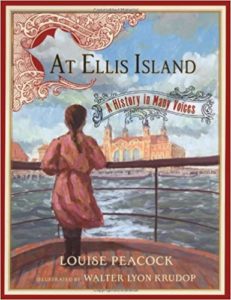 |
Louise Peacock’s At Ellis Island (Atheneum, 2007), subtitled “A History in Many Voices,” includes the stories of real immigrants who passed through Ellis Island, with quotations from letters and diaries, illustrated with photos and paintings. For ages 7-10. |
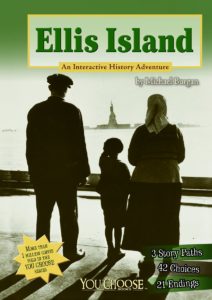 |
By Michael Burgan, Ellis Island: An Interactive History Adventure (Capstone, 2013) is one of the You Choose: History series, in which kids have a choice of three different story paths and 19 different endings. See if you can make it to a new life in the United States. For ages 8-11.
|
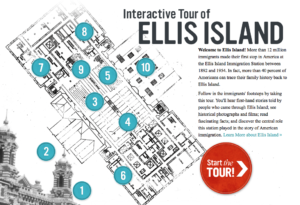 |
Take an interactive tour of Ellis Island.
|

